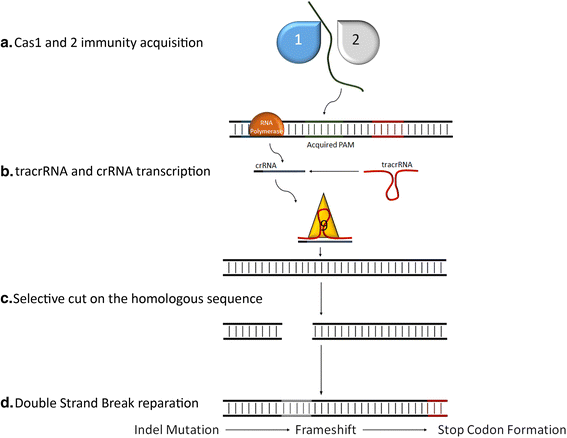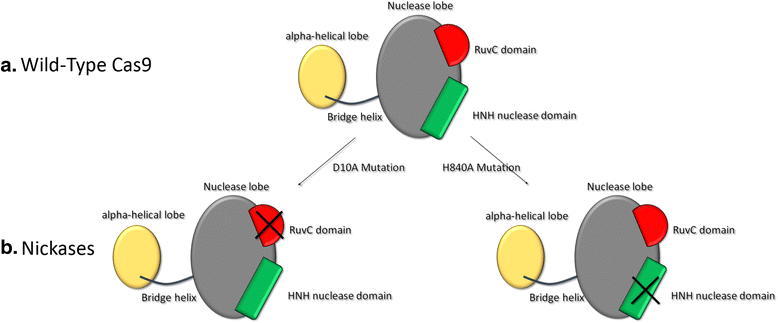Type II CRISPR/Cas9 approach in the oncological therapy
- PMID: 28619109
- PMCID: PMC5472952
- DOI: 10.1186/s13046-017-0550-0
Type II CRISPR/Cas9 approach in the oncological therapy
Abstract
CRISPR (Clustered Regularly Interspaced Short Palindromic Repeats) is a prokaryotic adaptable immune mechanism used by many bacteria and archaea to protect themselves from foreign nucleic acids. This complex system can recognize and cut non-self DNA in order to provide the prokaryotic organisms a strong defense against foreign viral or plasmid attacks and make the cell immune from further assaults. Today, it has been adapted to be used in vitro and in vivo in eukaryotic cells to perform a complete and highly selective gene knockout or a specific gene editing. The ease of use and the low cost are only two features that have made it very popular among the scientific community and the possibility to be used as a clinical treatment in several genetic derived pathologies has rapidly spread its fame worldwide. However, CRISPR is still not fully understood and many efforts need to be done in order to make it a real power tool for the human clinical treatment especially for oncological patients. Indeed, since cancer originates from non-lethal genetic disorders, CRISPR discovery fuels the hope to strike tumors on their roots. More than 4000 papers regarding CRISPR were published in the last ten years and only few of them take in count the possible applications in oncology. The purpose of this review is to clarify many problematics on the CRISPR usage and highlight its potential in oncological therapy.
Keywords: CRISPR; Gene delivery; Gene therapy; Genetic engineering; Immune therapy; Oncology.
Figures


References
-
- Wiedenheft B, Sternberg SH, Doudna JA. RNA-guided genetic silencing systems in bacteria and archaea. Nature. 2012;482:331-38. - PubMed
-
- Fineran PC, Charpentier E. Memory of viral infections by CRISPR-Cas adaptive immune systems: acquisition of new information. Virology. 2012;434:202-9. - PubMed
-
- Horvath P, Barrangou R. CRISPR/Cas, the immune system of bacteria and archaea. Science. 2010;327:167-70. - PubMed
-
- Barrangou R et al. CRISPR provides acquired resistance against viruses in prokaryotes. Science. 2007;315:1709-12. - PubMed
Publication types
MeSH terms
LinkOut - more resources
Full Text Sources
Other Literature Sources
Medical

